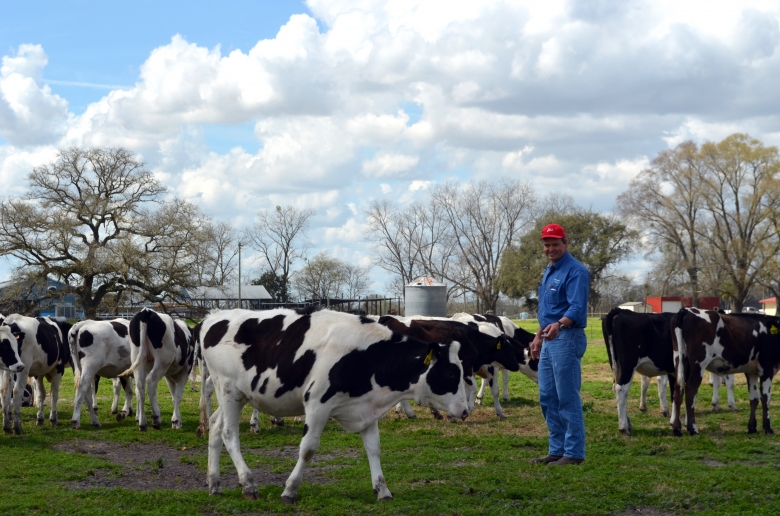
The cows at Shenandoah enjoy products like corn silage, citrus pulps, cottonseeds, ground corn, and grass hays. The Foodĭairy cows are fed a diet made especially for them.

The water used to wash the barns is cleaned then used rewash the barns or to fertilize crops. The sand is filtered out and eventually will be reused in the beds of the barn, the solids are filtered out and sometimes composted for manure fertilizer. Once the water runs through the barn it is collected and filtered. The water runs through the alleys of the barn, meaning the cows laying in their beds won’t get wet, but a lot of cows don’t mind standing in the moving water since it helps keep them cool. The barn is washed every few hours to help keep the cows clean and disease free.

Concrete is used in most barns because it is easily cleaned and maintained for long periods of time, 1300 pound cows can do a lot of damage if the surface isn’t strong. The stalls are filled with sand which gives the cows a soft place to land and also helps keeps the cows from slipping on the concrete. This wind and water help the cows cool themselves, keeping the barn in the mid-70’s even though it is reaching 90 degrees outside. The fans keep a constant 12 mph breeze flowing through the barn and automatic sprinklers fill the air with tiny droplets of water every few minutes. The barn is fully enclosed but one wall is covered in high power fans. The cows live in a free stall barn, meaning they have the option to eat, drink, and lie down at their will.

Shenandoah Dairy, in Live Oak, takes a unique approach to keeping their cows cool. Let’s take a look at a Florida dairy and learn about the lives of dairy cows! The Barnĭairy cows don’t like to be hot which makes raising them in Florida difficult. Dairy products provide essential nutrients to those who consume them, but most people have no idea how a dairy actually works. Dairy is a huge portion of the American diet, whether it be fresh milk or products like yogurt, cheese, butter, etc.


 0 kommentar(er)
0 kommentar(er)
